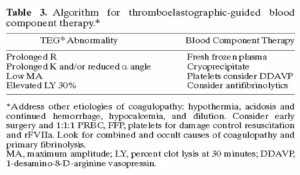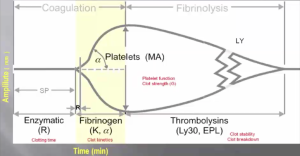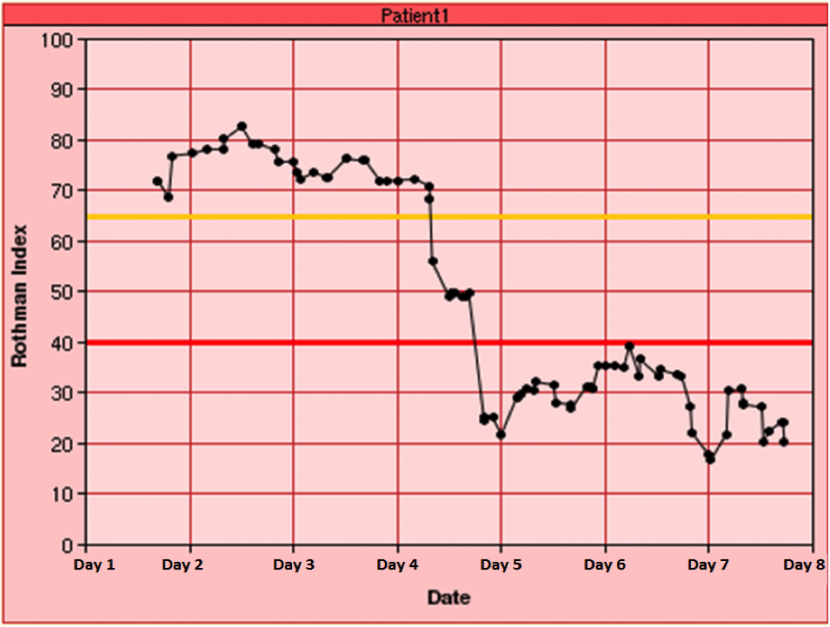One of the leading experts in the use of thromboelastography (TEG) is Dr. Mark Walsh from South Bend, Indiana. We were fortunate enough to have Dr. Walsh come all the way from Notre Dame to Baltimore and discuss the role of TEG in trauma and hemorrhagic shock. Incorporating TEG into your resuscitations may be a game changer based on the evidence provided in this lecture… Study up, because it will definitely be coming to a resuscitation bay near you SOON.
Podcast: Play in new window | Download
Subscribe: Apple Podcasts | RSS
So let’s review…
Cell-based Model of Hemostasis – There are 3 phases of hemostasis
- Initiation: Factor VIIa + Tissue Factor on injured endothelium & creates a small amount of thrombin
• Corresponds to R (reaction time) - Amplification: Thrombin activates platelets
• Corresponds to K (Clot kinetics) - Propagation: Coagulation factors assemble on activated platelets causing a “thrombin burst”
• Corresponds to α-angle (Clot kinetics)
Fibrinolysis Phase: An important part of the TEG because it allows the provider to see how well the patient’s clot is holding up. Even a minimal decrease in MA shown by the Ly30 has been found to result in an increased mortality. Here is an example TEG and what it all means.
Pearls
- The traditional end-points of resuscitation (improved LOC, skin perfusion, VS to baseline, UOP, and normal lab values) are DEAD. The new end-points of resuscitation for the trauma/bleeding patient are:
- Normal TEG
- Normal pH
- Would add – Normothermia
- Routine coagulation tests only reflect the initiation phase of hemostasis and consequently cannot be used to monitor coagulopathy. They also do not reflect clot quality or stability.
- Dr. Walsh’s TEG translation cheat sheet:

Walsh M, Thomas SG, Howard JC, et al. Blood component therapy in trauma guided with the utilization of the perfusionist and thromboelastography. Journal of Extra-Corporeal Technology. 2011 Sep; 43(3):162-7.
Suggested Reading
- Schöchl H, Voelckel W, Grassetto A, Schlimp CJ. Practical application of point-of-care coagulation testing to guide treatment decisions in trauma. J Trauma Acute Care Surg. 2013 Jun;74(6):1587-98.
- Holcomb JB, Minei KM, Scerbo ML, et al. Admission rapid thrombelastography can replace conventional coagulation tests in the emergency department: experience with 1974 consecutive trauma patients. Ann Surg. 2012 Sep;256(3):476-86.
- Johansson PI. Coagulation monitoring of the bleeding traumatized patient. Curr Opin Anaesthesiol. 2012 Apr;25(2):235-41.




